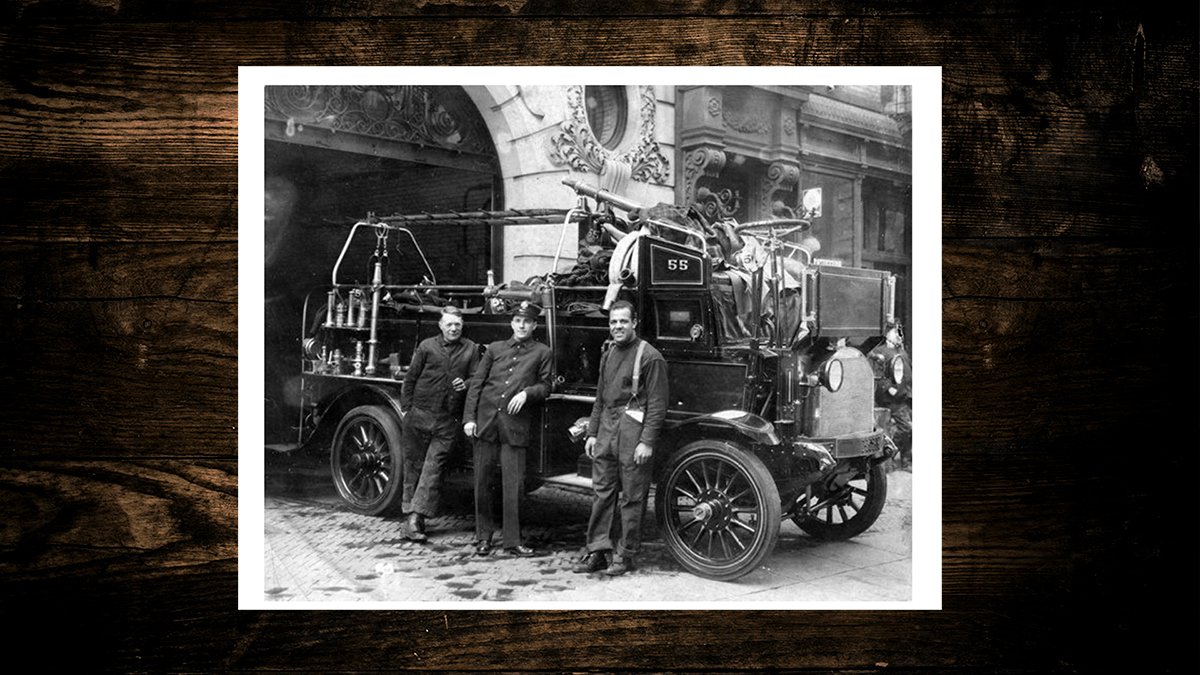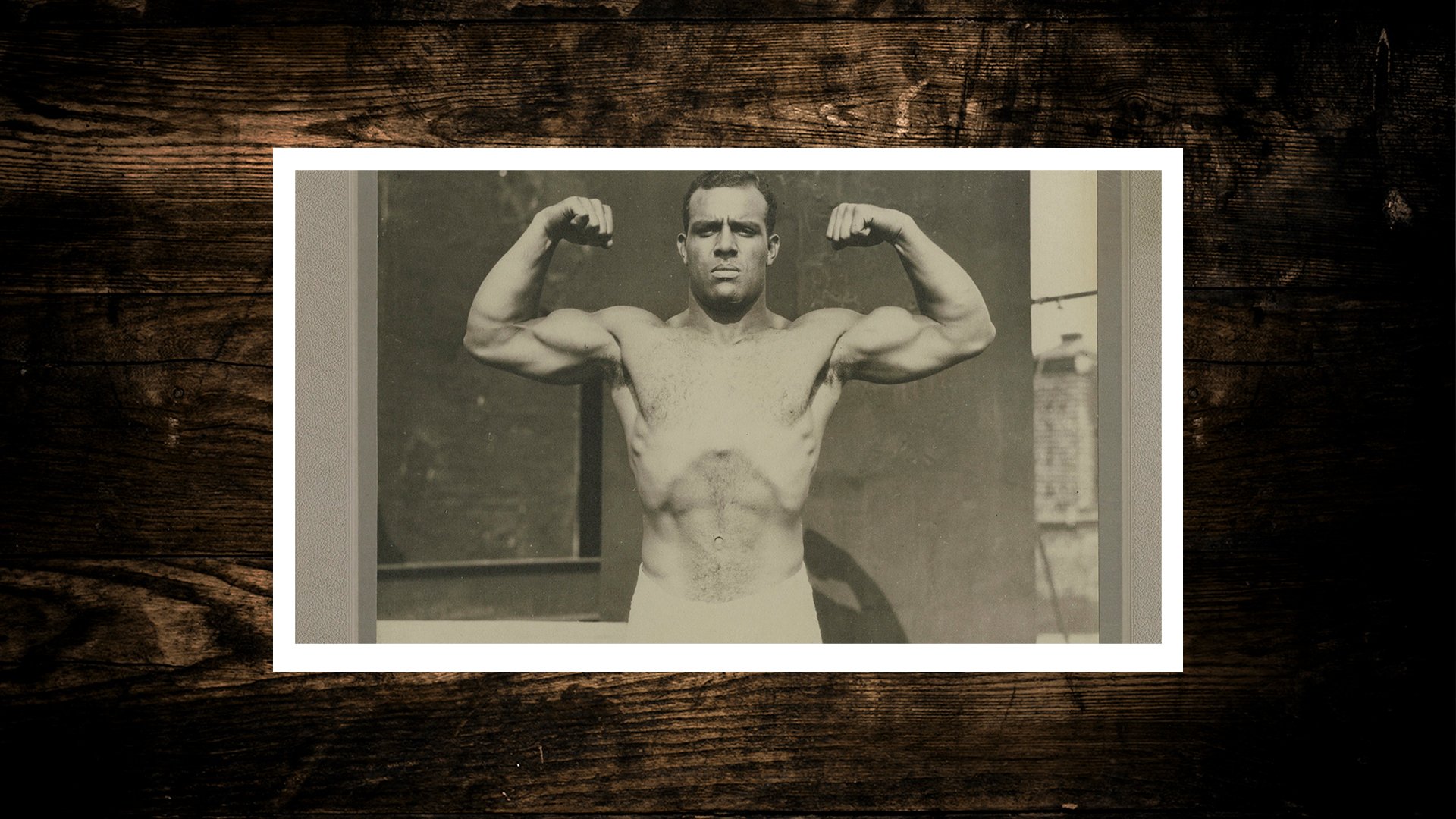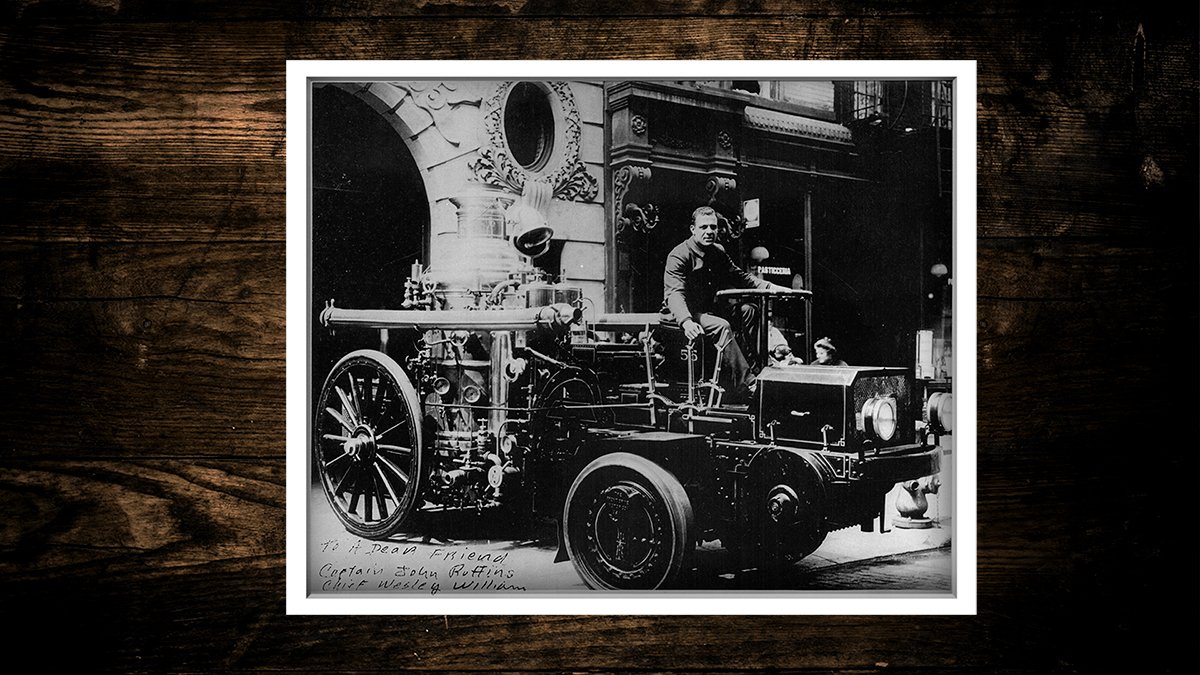How Legendary Black Firefighter Wesley Williams Changed the FDNY

Wesley Williams with members of his all-white crew at Engine 55 at 363 Broome Street in Little Italy. Screenshot from the book Firefight: The Century-Long Battle to Integrate New York’s Bravest/Composite made by Matt Fratus.
A mailman delivered a letter to the address 818 East 223rd Street, located in the Bronx in New York City. Peggy Williams took the letter addressed to her husband, Wesley, inside and waited for him to get home from work digging ditches in the underground subway tunnels. When the 21-year-old greeted his wife at the door, Peggy smiled, handing him the letter — a letter he thought he’d never receive.
When Williams was just a boy, he read about “Big Sam” in the Black newspapers. Sam J. Battle was a 6-foot-3, nearly 300-pound Black man from North Carolina. He had accomplished what was perceived to be the impossible when he joined the ranks of the New York City Police Department. Since his swearing in to the NYPD on March 6, 1911, Battle had reached folk hero status almost overnight. In an era when the prestigious profession included mostly Irish American officers, he was more than just the first Black patrolman in the city’s history; he was an inspiration.
Nearly eight years later, and much to Williams’ surprise, the letter revealed instructions for probationary firefighter Wesley Williams to report to Engine 55 of the New York City Fire Department. The FDNY acceptance letter read that he was to arrive no later than 8 a.m. on Jan. 10, 1919, at the firehouse on 363 Broome Street, in the heart of Lower Manhattan’s Little Italy.

Williams had applied to become a New York City firefighter the year prior and was the only person in his class to score a perfect 100% on the physical exam — making him just the second person in FDNY history to do so. He also scored nearly 100% on the written exam and was ranked 13th out of 2,700 candidates. He was a physical specimen at 5 feet 9 inches tall and a muscular 180 pounds, yet his only flaw in the eyes of his fellow firefighters was his race.
“The day Engine 55 learned it was going to have to swallow the stigma of working with a black man, the captain put in for a transfer — along with every single firefighter in the company,” writes Ginger Adams Otis in the book Firefight: The Century-Long Battle To Integrate New York’s Bravest. “An order came back swift and stern from FDNY headquarters: the Negro stays, and so does everyone else.”
That was the beginning of his 33-year career as one of the first Black firefighters in FDNY history. In the early days, working alongside an all-white crew, he faced racial torment and was treated as the house pariah. He couldn’t leave his gear out without its being tampered with. Trust with his fellow firefighters was nonexistent, in a job where relying on one another can mean life or death. The Irish and Italian firefighters would only speak to him if he agreed to sleep in the basement instead of the communal quarters, but he refused and was punished for it with the silent treatment and worse.
Williams relied on Italian street kids for firehouse gossip. For the price of a few coins, they told Williams his company was going to “burn him up” in the next big fire. When that big fire came later in 1911, Williams proved to be the only competent sparky of the bunch. Williams took command of the firehose nozzle as his crew stacked behind. They reached the basement, and Williams attempted to suppress the flames. A glowing red backdraft screamed over his head, and he instinctively dropped to his knees.
Read Next: Four-Legged Smoke Eaters: How Dalmatians Became Official Mascots of the Fire Service

“The men had only fire helmets, rubber boots, gloves, and their long thick rubber coats as protection,” writes Otis. “There were no air masks, no fire-proof bunker gear and no radios or emergency buttons to push for help.”
In the darkness lit by flames, he struggled to control the hose from swinging wildly in his arms. He peered behind him to discover that all of the firefighters from Engine 55 were gone. He single-handedly put out the fire. As Williams walked out of the building, covered in black soot from head to toe, the battalion chief looked at his disgraced crew. “So, men, you were gonna burn him up,” Battalion Chief Ben Parker said to them. “Looks like he burned you up instead.”
Williams requested a transfer out of Engine 55 but was denied. Instead of quitting because of the ruthless Jim Crow-like treatment and pressure he was under, however, he recruited the Black press to investigate department decisions.
He also vowed to study for FDNY promotional exams to achieve higher ranks. Williams made lieutenant in 1927 and in 1940 established The Vulcan Society with a group of Black firefighters in “opposition to the blatant segregating practices of the early FDNY.” The community affectionately called him “The Chief” in homage to the first African American in FDNY history to earn the title of a battalion chief.
Chief Wesley Williams served the remainder of his career with Engine 55 until an injury forced his retirement in 1952. In 1965 the FDNY endorsed the Chief Wesley Williams Medal for Valor award to be presented annually for bravery in the line of duty. Although Williams passed away at the age of 86 in 1984, the Vulcan Society continues to advocate and fight for diversity on behalf of Black firefighters in the fire community.
Read Next: The Legend of Ed Loder: Boston Fire Department’s Most Decorated Firefighter

Matt Fratus is a history staff writer for Coffee or Die. He prides himself on uncovering the most fascinating tales of history by sharing them through any means of engaging storytelling. He writes for his micro-blog @LateNightHistory on Instagram, where he shares the story behind the image. He is also the host of the Late Night History podcast. When not writing about history, Matt enjoys volunteering for One More Wave and rooting for Boston sports teams.
BRCC and Bad Moon Print Press team up for an exclusive, limited-edition T-shirt design!
BRCC partners with Team Room Design for an exclusive T-shirt release!
Thirty Seconds Out has partnered with BRCC for an exclusive shirt design invoking the God of Winter.
Lucas O'Hara of Grizzly Forge has teamed up with BRCC for a badass, exclusive Shirt Club T-shirt design featuring his most popular knife and tiomahawk.
Coffee or Die sits down with one of the graphic designers behind Black Rifle Coffee's signature look and vibe.
Biden will award the Medal of Honor to a Vietnam War Army helicopter pilot who risked his life to save a reconnaissance team from almost certain death.
Ever wonder how much Jack Mandaville would f*ck sh*t up if he went back in time? The American Revolution didn't even see him coming.
A nearly 200-year-old West Point time capsule that at first appeared to yield little more than dust contains hidden treasure, the US Military Academy said.












